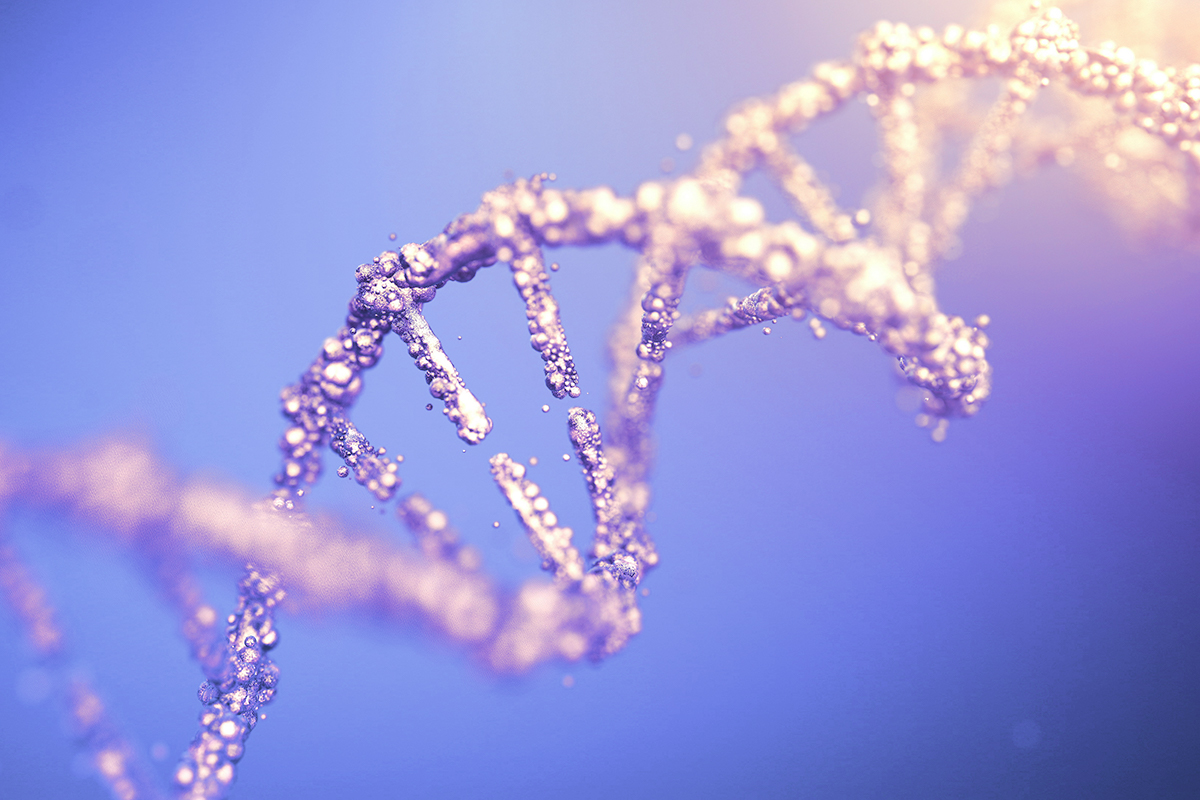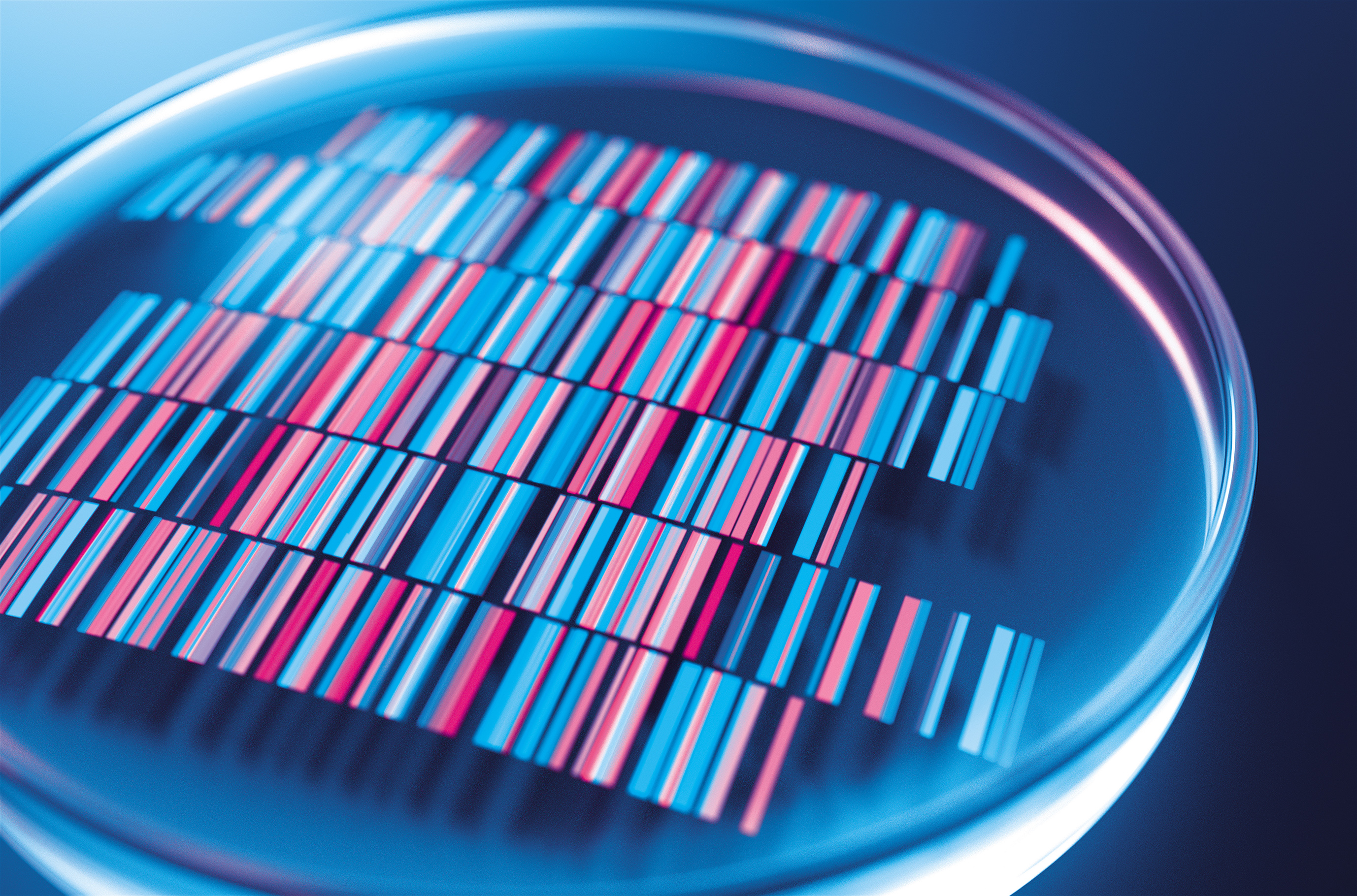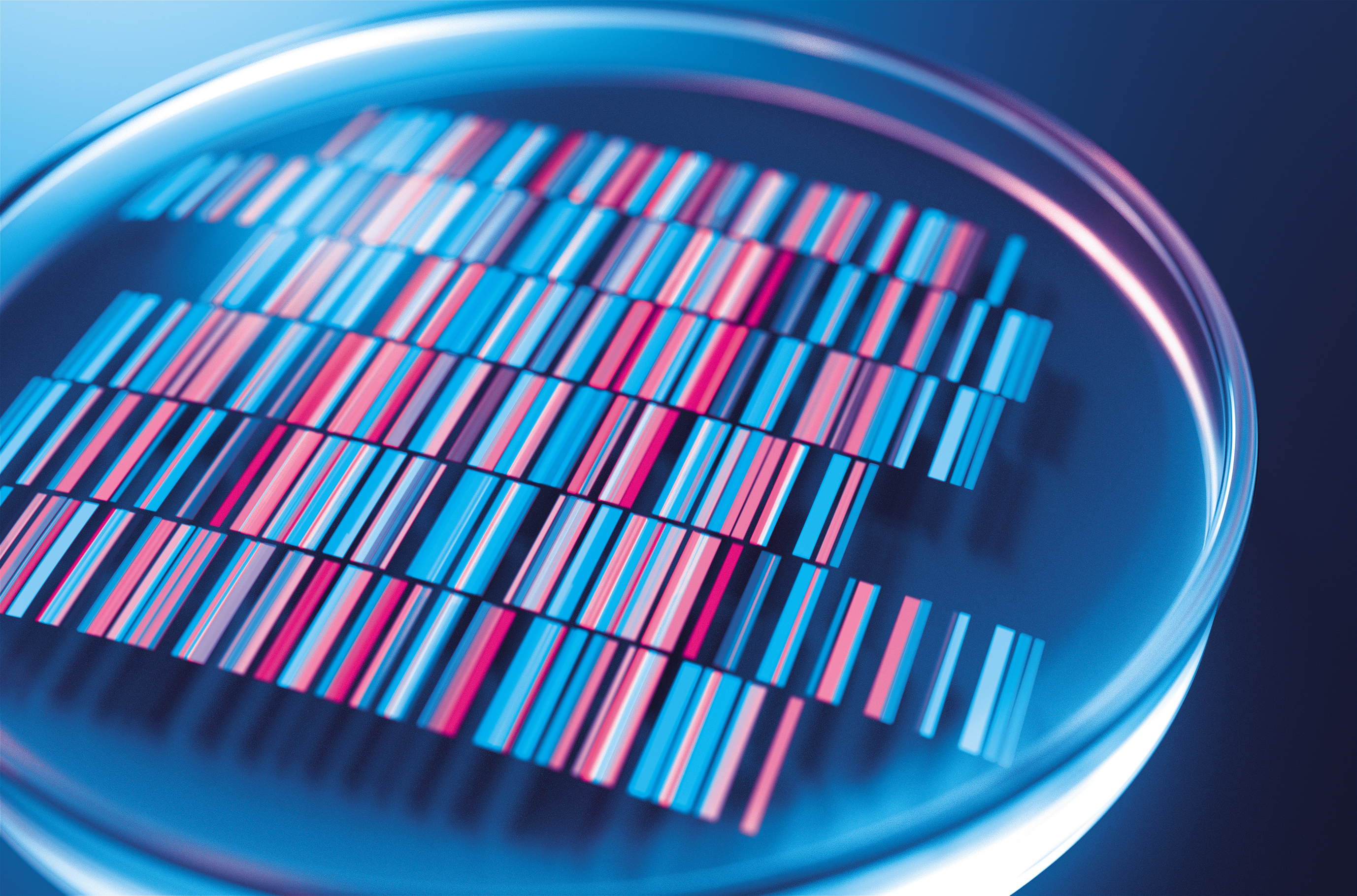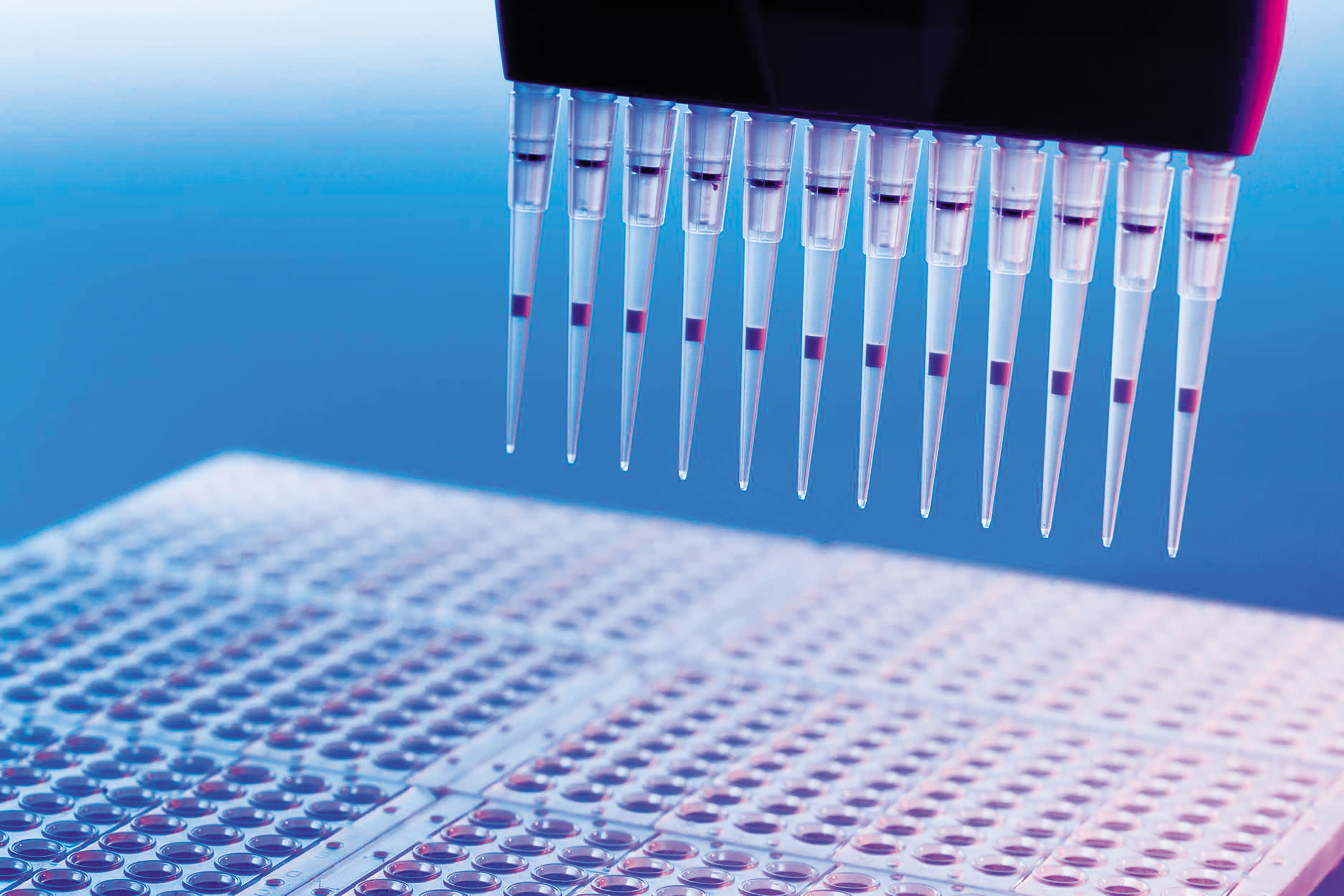In 1998, the General Office of the State Council, People's Republic of China, announced and implemented the Interim Measures for the Administration of Human Genetic Resources. On May 28, 2019, nearly 21 years after the implementation of the Interim Measures, the State Council released the Administration Regulations on Human Genetic Resources which were formally implemented on July 1, 2019.
This article, the first in a series, provides an insight of the new measures adopted in the regulations, with the background of the implementation of the Interim Measures and some analysis of the Administrative Measures regarding the human genetic resources in China.
Interpretation (I) of the Administration Regulations on Human Genetic Resources of the People's Republic of China
Part One: Historical Evolution and Development of the Administration System regarding Human Genetic Resources in China
The Interim Measures are the first administrative regulations concerning the management of human genetic resources in China. It was a piece of legislation ahead of its time, compared to China’s socio-economic conditions at the end of the 20th century. These 'provisional measures' stipulated that if the result of collaborative research and development between Chinese and foreign institutions is patentable, the consequent patent right shall be owned by both parties.
The United States confirmed the patentability of genes through case law in the 1980s. While the issue is still unclear in Chinese Patent Law, the Interim Measures did create the potential for the revision of laws as well as the practice. However, it is because of the advancement of the Interim Measures that the law did not take full effect for a long time.
In recent years, with the development of technologies such as “second generation gene sequencing technology”, “gene therapy” and “drug testing based on genetic information”, the collection of human genetic resources has become more convenient and efficient and the resources have been used more widely. Therefore, the management of human genetic resources has drawn great attention from the relevant departments.
In accordance with the Interim Measures, the Ministry of Science and Technology has made several administrative punishment decisions in recent years, including one (against Huashan Hospital affiliated to Fudan University) in 2015, two (against Wuxi AppTech New Drug Development Co., Ltd. and Shenzhen BGI Gene Science and Technology Services Co., Ltd.) in 2016 and three (against Quintiles Medical Research (Beijing) Co., Ltd., Amoy Diagnostics Co., Ltd. and AstraZeneca Investment (China) Co., Ltd.) in 2018. Those measures further demonstrated the importance attached by the Ministry of Science and Technology to human genetic resources management.
Part II: Key points and analysis of the administrative measures regarding human genetic resources stipulated in the Regulations
1. Scope and definition of "human genetic resources"

| Regulations | Draft Regulations | Interim Measures |
| The term "human genetic resources" mentioned in these Regulations includes both human genetic resource materials and human genetic resource information. Human genetic resource materials refer to genetic materials such as organs, tissues and cells that contain hereditary substances such as human genomes and genes. Human genetic resource information refers to information materials such as data generated from human genetic resource materials. | The term "human genetic resources" mentioned these Regulations refers to materials such as organs, tissues and cells that contain human genomes and genes, and the information generated from the materials. | For the purpose of the Measures, the term "human genetic resources" refers to the genetic materials such as human organs, tissues, cells, blood specimens, preparations of any types or recombinant DNA constructs, which contain human genome, genes or gene products as well as the information relating to such genetic materials. |
Analysis:
(1) The classification of “human genetic resource materials” in the Regulations is based on the structure form of the organisms, i.e. cells, tissues and organs, which is more scientific than the one adopted by the Interim Measures.
(2) “Nucleic Acid” and “Nucleic Acid Products” in the Draft Regulations and “Recombinant Deoxyribonucleic Acid (DNA) Constructors” in the Interim Measures were excluded from the “human genetic resource materials” in the Regulations. The reason is that although nucleic acid and deoxynucleic acid is the most basic structural form of genetic resources, their value as genetic resources is directly reflected in the nucleotide base sequence, which can be fully presented in the form of data.
2. The scope of supervision and general requirements
| The Regulated Situations | The Exceptional Situations |
| Sampling | Clinical Diagnosis and Treatment |
| Preservation | Blood Collection and Supply |
| Utilization | Crime Investigation |
| External Provision | Doping Detection |
| Funeral and Interment |
| Regulations | Draft Regulations | Interim Measures |
| Sampling, preservation, use and external provision of China's human genetic resources shall comply with these Regulations. Sampling and preserving human substances such as organs, tissues and cells and carrying out related activities for the purposes of clinical diagnosis and treatment, blood collection and supplying services, crime investigation, doping detection and funeral and interment shall comply with the provisions of relevant laws and administrative regulations. | The Regulations apply to the activities including collection, preservation, research and development, departure and entry of human genetic resources in China for the purpose of scientific research. Collection, preservation, research and development, international collaboration of human genetic resources shall comply with the ethical principles and safeguard the safety and privacy rights of the resource providers. | Whoever engages in such activities in China as sampling, collecting, researching, developing, trading or exporting human genetic resources or taking such resources outside the territory of the People's Republic of China shall abide by the Measures. |
Analysis:
(1) The supervision and regulation of human genetic resources stipulated in the Regulations are divided into four aspects: sampling, preservation, utilization and external provision. These four aspects correspond to the three stages of research and development of genetic resources in practice: acquisition, preservation and utilization. Among them, the provisions concerning the preservation of human genetic resources are newly-added. We have learned from the relevant departments that China's National Standard on the human genetic resources sample bank is currently under formulation and will be officially published soon. It will be elaborated on in subsequent articles.
(2) In the Regulations, the "departure and entry" in Draft Regulations and “export and exit” in the Interim Measures are replaced by the "external provision". This edited wording matches well with the current situation. Since high-throughput gene sequencing equipment is more frequently seen in laboratories, biomedical companies and universities throughout China, it is more common to provide genetic information to foreign companies, universities or individuals in the form of data during a collaborative research and development, the way of which doesn’t fall within the former expression "export and exit" in the Interim Measures. In comparison, the expression “external provision” is more obscure and implies the regulation of a wider range of scenarios.
(3) There are special provisions in the special fields such as clinical diagnosis and treatment, blood collecting and supplying services, crime investigation, doping detection and funeral and interment. Therefore, according to the principle of "special law is superior to general law", in the case of abovementioned fields, special provisions shall prevail. What’s more, the definition of "clinical diagnosis and treatment" as well as relevant regulatory measures in the upcoming regulations concerning human genetic resources, should be clarified in order to prevent the circumvention of the examination under the Regulations.
3. The authorities in charge of human genetic resources

| Regulations | Draft Regulations | Interim Measures |
| The administrative department of science and technology under the State Council is responsible for the management of human genetic resources nationwide. The administrative departments of science and technology of the people's governments of the provinces, autonomous regions and centrally-administered municipalities are responsible for the management of human genetic resources in their respective administrative areas. | The administrative department of science and technology under the State Council is responsible for the management of human genetic resources nationwide.The administrative departments of science and technology of the people's governments of the provinces, autonomous regions and centrally-administered municipalities are responsible for the management of human genetic resources in their respective administrative areas. | The competent administrative department of science and technology as well as the competent administrative department of health under the State Council shall be jointly responsible for the administration of human genetic resources all over China and shall jointly establish the Human Genetic Resources Administration of China (HGRAC) to carry out routine duties. The HGRAC shall initially be placed under the competent administrative department of science and technology under the State Council. |
Analysis:
(1) The Regulations specify that the Ministry of Science and Technology of the State Council and science and technology bureaus on all levels are responsible for the management of human genetic resources. In contrast to the "co-management of two departments", which was stipulated in the Interim Measures, the Regulations confirm how the actual practice is.
(2) The Interim Measures stipulated that the Management Office of Human Genetic Resources (Genetics Office) was directly in charge of the management of human genetic resources. But it was only a temporary institution within the Ministry of Science and Technology with undetermined administrative subordination, which may have caused certain difficulties due to ambiguities and its temporary nature. Now, the Regulations clearly stipulate that the Ministry of Science and Technology is responsible for the management of human genetic resources nationwide and imply that the Genetics Office will become a formal subordinate body of the Ministry of Science and Technology. Since the Regulations have reinforced the supervision of human genetic resources, the Genetics Office will, in my opinion, be promoted regarding its administrative level and get its name changed to remove its uncertain status as an "office".
4. The Regulations prohibit foreign organizations, individuals and the institutions established or actually controlled thereby from collecting, preserving and external providing of Chinese human genetics resources.
| Regulations | Draft Regulations | Interim Measures |
| Foreign organizations, individuals and the institutions established or actually controlled thereby shall not sample or preserve China's human genetic resources within the territory of China. Nor shall they provide China's human genetic resources out of the country. | The conditions the entities shall satisfy when carrying out the collection and preservation of human genetic resources materials include: legal persons legally established in China...... Foreign institutions and their branches in China without legal personality shall cooperate with Chinese legal persons to carry out the researching and development of human genetic resources in China. Any organizations or individuals, without approval, may not export Chinese human genetic resources collected in China in any form. | For any international collaborative project involving human genetic resources in China, the Chinese collaborating party shall be responsible for going through the due formalities of application for approval. Agencies directly under the Central Government shall, according to subordinate relations, apply to the relevant administrative department under the State Council; and local institutions or institutions with no higher-level supervisory department or no subordinate relations shall apply to the local administrative departments, and upon receiving the approval of the relevant authorities , the Chinese collaborating party shall apply to the HGRAC for approval prior to entering into an official contract. |
Analysis:
(1) We can find in the above three texts that the prohibitive terms such as “shall not” are used more frequently in the Regulations than in the Draft Regulations and the Interim Measures. Since the current supervision and regulation of human genetic resources management is becoming stricter, the research and development in this field by foreign biopharmaceutical companies or related medical institutions and laboratories will face more stringent examination, formal and substantive, and supervision, pre-approval and post-approval.
(2) “Foreign organizations, individuals and the institutions established or actually controlled thereby” is mentioned in the Regulations but without a detailed specification of how to determine the phrase “actually controlled”. From our perspective, since the Chinese government is casting more restrictions to foreign investment concerning obtaining and utilizing human genetic resources in China, the actual controllers should be identified by examining the equity structures of the company and its shareholder-companies and by looking into the equity, voting rights or management rights they directly or indirectly hold. Besides, since the word "established" is used, any company invested by a foreign entity, more or less will be identified as a “foreign institution”. This aforementioned criterion of identifying the actual controllers by penetrating the equity structure was also adopted in Article 45 of the Foreign Investment Law of China (Draft). The following implementation rules of the Regulations should be paid attention to in order to find more specifications.
5. Overall principles of sampling, preservation, use and external provision of human genetic resources

Analysis:
(1) There are three “shall-nots” (shall not harm national security, shall not harm public security and shall not harm social and public interests), which focus on the result, and three “shall-dos”, including “shall obtain the provider’s informed consents”, which focus on the process in the overall principles. There’s no doubt that the Regulations lay emphasis on the result, instead of the process. Therefore, the key of the human genetic resources management and the examination and approval of specific matters lies in the protection of national security, public safety and social public interests. Besides, personal privacy and data protection, with the effective separate special laws, are also under the protection of the Regulations, as secondary matters.
(2) Some provisions in the Regulations, such as the prohibition of the dealing in genetic resources unless for scientific research and with reasonable payment, providers’ informed consent, necessary ethical review, are in accordance with the requirements stated in the relative regulations of the clinical trials of medicines and medical devices. Since genetic resources are essential for the development of drugs and pharmaceuticals, there are many similarities between the regulatory measures in the two fields. Therefore, in the absence of detailed implementation rules and specific guidelines, we can, at present, use the relevant provisions regarding Chinese medicines and medical devices as a reference.
(3) In addition, the above-mentioned “technical specifications of the Ministry of Science and Technology" mainly refer to the relevant national standards. There will be a specific introduction in the following articles, together with the separate part regarding collection, preservation etc.
In summary, this article has made some interpretations of the Regulations from five aspects, i.e. the definition of human genetic resources, the scope of supervision and regulation, the authorities, the restriction of foreign investment and overall principles. In the following articles, we will further elaborate on the Regulations regarding sampling, preservation, utilization, international collaboration, external provision and legal liability.
For further updates and analysis, please continue to follow this column.
To be continued…
人类遗传资源管理的新趋势——《人类遗传资源管理条例》的解读(一)
作者按:1998年6月10日国务院办公厅发布并施行《人类遗传资源管理暂行办法》(以下称:“《暂行办法》”)。在《暂行办法》实施近21年后的2019年5月28日,国务院再次发布《人类遗传资源管理条例》(以下称:“《条例》”),《条例》已于2019年7月1日正式实施。我们将结合《条例》中的新规以及近年来《暂行办法》实施的现状,通过对《条例》的系列解读,分析当下中国人类遗传资源管理的一些趋势。本文为系列文章的第一篇。
本文总字数:4744字,预计阅读时间:15分钟。
第一部分:中国人类遗传资源管理制度的历史沿革和发展
《暂行办法》是中国最早出台的关于人类遗传资源管理的行政法规。在20世纪末中国经济社会的大背景下,《暂行办法》的制定和实施,在当时是一项超越时代的立法工作。就《暂行办法》的规定内容来看,《暂行办法》对于人类遗传资源出口环节的侧重,尤其是在我国《专利法》尚未完成二次修订,美国自20世纪80年代通过判例确定基因可专利的背景下,《暂行办法》为我国后续法律背景下的实施以及相关国际合作留下了空间。当然,从另一方面看,也正是由于《暂行办法》的超前性,导致在《暂行办法》实施后的较长一段时间内,《暂行办法》并未充分地发挥相关作用。
近年来,随着二代基因测序技术、基因治疗、以及基于遗传信息开展的药物试验等技术逐步成熟,人类遗传资源的采集方式越来越便捷、高效,用途也越来越广泛,人类遗传资源的管理已引起相关部门的重视。特别是科技部依据《暂行办法》于2015年作出的1例行政处罚决定(被处罚对象为:复旦大学附属华山医院)、于2016年作出的2例行政处罚决定(被处罚公司分别为:苏州药明康德新药开发股份有限公司、深圳华大基因科技服务有限公司)以及于2018年作出的3例行政处罚决定(被处罚公司分别为:昆皓睿诚医药研发(北京)有限公司、厦门艾德生物医药科技股份有限公司、阿斯利康投资(中国)有限公司)进一步表明了科技部对人类遗传资源管理的重视。
第二部分:《条例》所规定的人类遗传资源管理的要点及解读
1、《条例》规定的“人类遗传资源”的范围及定义

| 《条例》 | 《条例》送审稿 | 《暂行办法》 |
| 本条例所称人类遗传资源包括人类遗传资源材料和人类遗传资源信息。 人类遗传资源材料是指含有人体基因组、基因等遗传物质的器官、组织、细胞等遗传材料。 人类遗传资源信息是指利用人类遗传资源材料产生的数据等信息资料。 | 本条例所称人类遗传资源是指含有人体基因组、基因及其产物的器官、组织、细胞、核酸、核酸制品等资源材料及其产生的信息资料。 | 本办法所称人类遗传资源是指含有人体基因组、基因及其产物的器官、组织、细胞、血液、制备物、重组脱氧核糖核酸(DNA)构建体等遗传材料及相关的信息资料。 |
解读:
(1)《条例》中对于人类遗传资源材料的定义是以生物的结构形态来进行区分,即:细胞、组织和器官,相比《暂行规定》而言更符合生命科学的分类规则。
(2)《条例》中删除了《条例》(送审稿)中核酸、核酸制品的表述;以及《暂行办法》中重组脱氧核糖核酸(DNA)构建体的表述。笔者认为,其原因在于核酸或脱氧核酸虽为遗传资源最基本的结构形式,但是其作为遗传资源的价值直接体现在核酸碱基排列上,而这一排列顺序完全可以通过数据形式所表现。
(3)《条例》相比《条例》(送审稿)和《暂行办法》而言,直接将信息资料表述为数据,从而明确了人类遗传资源信息资料的表现形式。
2、《条例》规定的监管范围及总体要求
| 直接适用《条例》的情形 | 存在其他特殊规定的情形 |
| 采集 | 临床诊疗 |
| 保藏 | 采供血服务 |
| 利用 | 查处违法犯罪 |
| 对(境)外提供 | 兴奋剂检测 |
| 殡葬活动需要 |
| 《条例》 | 《条例》送审稿 | 《暂行办法》 |
| 采集、保藏、利用、对外提供我国人类遗传资源,应当遵守本条例。 为临床诊疗、采供血服务、查处违法犯罪、兴奋剂检测和殡葬等活动需要,采集、保藏器官、组织、细胞等人体物质及开展相关活动,依照相关法律、行政法规规定执行。 | 本条例适用于为科学研究目的,在我国从事人类遗传资源的收集、保藏、研究开发、出入境等活动。 开展人类遗传资源的收集、保藏、研究开发、国际合作等活动,应当遵守公认的伦理原则,保护资源提供者的安全和个人隐私。 | 凡从事涉及我国人类遗传资源的采集、收集、研究、开发、买卖、出口、出境等活动,必须遵守本办法。 |
解读:
(1)《条例》规定的对人类遗传资源的监管范围包含了:采集、保藏、利用和对外提供四个方面。这四个方面分别对应的是实践中遗传资源研究、开发所需经过的三个阶段:获取、保存、使用。其中,关于人类遗传资源保藏的规定是《条例》中新增加的章节。我们从有关部门了解到,中国关于人类遗传资源样本库的国家标准正在制定过程中,不久将正式对外公布实施,笔者将在后续的文章中进行详述。
(2)《条例》中以“对外提供”替代了《条例》送审稿中的“出入境”以及《暂行办法》中的“出口、出境”。笔者认为,在目前我国各类实验室、生物医药公司、高校中,高通量的基因测序设备越来越普遍,因此在有关人类遗传资源研究开发的国际合作中,以数据形式向国外公司、院校或个人提供遗传信息的情况越发普遍,《暂行办法》中关于“出口、出境”的表述不足以涵盖全部目前以及未来可能的向境外提供遗传信息的方式。
(3)临床诊疗、采供血服务、查处违法犯罪、兴奋剂检测和殡葬等特殊领域存在相关特别规定,因此根据“特别法优于一般法”的原则,在有此类特殊规定的情况下,应当以特殊规定为准。但是,笔者认为,后续涉及人类遗传资源的临床诊疗规定中,应明确“临床诊疗”的判断标准和监管措施,以防“临床诊疗”成为绕过人类遗传资源监管的灰色通道和借口。
3、《条例》规定的人类遗传资源的主管部门

| 《条例》 | 《条例》送审稿 | 《暂行办法》 |
| 国务院科学技术行政部门负责全国人类遗传资源管理工作 省、自治区、直辖市人民政府科学技术行政部门负责本行政区域人类遗传资源管理工作 | 国务院科学技术行政部门负责全国人类遗传资源管理工作 省、自治区、直辖市人民政府科学技术行政部门负责本行政区域人类遗传资源管理工作 | 国务院科学技术行政主管部门和卫生行政主管部门共同负责管理全国人类遗传资源,联合成立中国人类遗传资源管理办公室,负责日常工作。 中国人类遗传资源管理办公室暂设在国务院科学技术行政主管部门。 |
解读:
(1)《条例》明确了负责人类遗传资源管理工作的是国务院科技部及各地方的科技厅(局)。这一规定既是对《暂行办法》中“双部共管”规定的修正,也是对目前实践中主要由科技部负责人类遗传资源管理工作之现状的进一步确认。
(2)《暂行办法》中规定目前具体负责人类遗传资源管理工作的中国人类遗传资源管理办公室(“遗传办”)仅作为科技部的暂设机构。因此,遗传办的行政隶属和级别在法律上均是待定状态,不利于其开展工作。此次《条例》在明确规定科技部负责全国范围内人类遗传资源管理工作的同时,也暗含了遗传办正式将成为科技部的下属机构。此外,笔者认为,随着《条例》加强了对人类遗传资源的监管力度,遗传办的行政级别相较目前将有较大程度的提升,其名称中的“办公室”也可能随之改名。
4、《条例》禁止外国组织、个人或实际控制的机构采集、保藏、对外提供中国人类遗传资源
| 《条例》 | 《条例》送审稿 | 《暂行办法》 |
| 外国组织、个人及其设立或者实际控制的机构不得在我国境内采集、保藏我国人类遗传资源,不得向境外提供我国人类遗传资源。 | 从事人类遗传资源材料收集与保藏的单位应当具备下列条件:在中国境内依法成立的法人…… 境外机构及其在中国境内不具有法人资格的分支机构研究开发中国人类遗传资源,应当与中国境内法人合作进行。 未经批准,任何组织和个人不得以任何形式将在中国境内采集的中国人类遗传资源输出境。 | 凡涉及我国人类遗传资源的国际合作项目,须由中方合作单位办理报批手续。中央所属单位按隶属关系报国务院有关部门,地方所属单位及无上级主管部门或隶属关系的单位报该单位所在地的地方主管部门,审查同意后,向中国人类遗传资源管理办公室提出申请,经审核批准后方可正式签约。 |
解读:
(1)结合《暂行办法》到《条例》送审稿,再到《条例》的公布时间顺序,再结合上述规定的文字表述,不难发现,“不得”等禁止性用词的出现频率在加大。结合前文所述的中国人类遗传资源管理的现状,笔者认为外国生物制药公司或相关医疗机构及实验室在中国境内开展人类遗传资源的研究开发工作将面临越发严格的形式和实质审查,审批前和审批后监管。
(2)在《条例》的上述规定中,特别提及“外国组织、个人设立或者实际控制的机构”。由于《条例》并未对如何判定这一机构作出明确规定,因此我们将持续关注《条例》后续的实施细则和具体操作指南。但是,在中国加大对外资获取、利用中国人类遗传资源的限制的情况下,笔者认为,“外国组织、个人设立或者实际控制的机构”的认定将采用穿透股权结构的实际控制人标准,甚至由于“设立”一词的存在,任何股权结构中含有外资成分的公司都可能被认定为“外国组织、个人设立或者实际控制的机构”。这一穿透股权结构的实际控制人标准在先前公布的中国《外商投资法》(草案征求意见稿)第四十五条、中已经有所体现。
5、《条例》中关于采集、保藏、利用、对外提供人类遗传资源的总体规定

解读:
(1)对比上述禁止性规定的“三不得”(不得危害国家安全、不得危害公共安全、不得危害社会公共利益)和应然性规定中的“应当取得提供者的知情同意”,我们不难发现“三不得”所针对的是结果,而应当取得知情同意所针对的是过程。很显然,是结果而非过程才是《条例》的制定目的。因此,笔者认为中国人类遗传资源管理和具体事项审批的核心和重点在于保护国家安全、公共安全和社会公共利益。在已有相关特别法规定的情况下,个人隐私和数据保护是《条例》低位阶的保护事项。
(2)如果读者对于中国药品和医疗器械注册制度有所了解的话,会发现《条例》的上述规定中关于禁止买卖遗传资源,但可以支付合理成本;应当取得提供者的知情同意;应当进行伦理审查等事项与中国药品和医疗器械临床试验的相关规定和要求有异曲同工之处。当然,遗传资源的重要用途之一就是用于药物、药械的开发,因此两者的监管措施会有很多相似之处。而从另一方面来讲,在《条例》的实施细则和具体指南尚未公布的当下,我们也可以通过中国药品和医疗器械的相关规定,窥知未来人类遗传资源管理的主要内容和方向。
(3)此外,上述“应当遵循科技部的技术规范”所指的主要是相关国家标准,笔者将在后续文章中,结合采集、保藏等部分进行具体介绍。
上述5点内容,笔者主要从什么是人类遗传资源、遗传资源的监管范围、监管机构、外资参与的限制和原则性规定等方面介绍并解读了《条例》的第一部分规定,在后续的文章中,笔者将分别从采集、保藏、利用/国际合作、对外提供和监管处罚等方面进行具体介绍和解读,敬请各位读者继续关注本系列的后续文章并进行催更。
待续